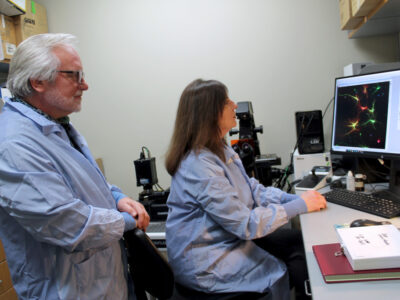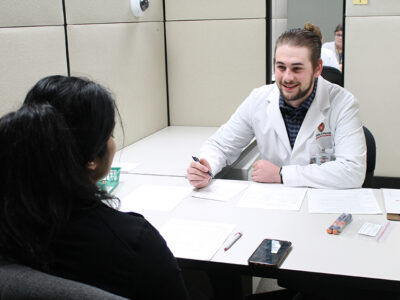
5
March

Professor Lian Yu studies how molecules pack in materials to design better drug formulations, cell phone displays and more.
By Jill Sakai
Photos by Sally Griffith-Oh
Glass has many practical uses: windows, optical fibers, computer screens—and increasingly, pharmaceuticals.
Lian Yu, a professor in the Pharmaceutical Sciences Division of the UW–Madison School of Pharmacy, studies the molecular structures of pharmaceutical materials with an aim toward designing low-cost drug formulations with better stability and efficacy.
The ideal drug formulation would remain shelf-stable at full potency, then quickly and fully dissolve in the body to release the medicine at the intended concentration. This requires striking a balance between stability and solubility, properties that are determined by the material’s molecular structure. Yu’s work focuses on materials with glassy structure, called amorphous solids.
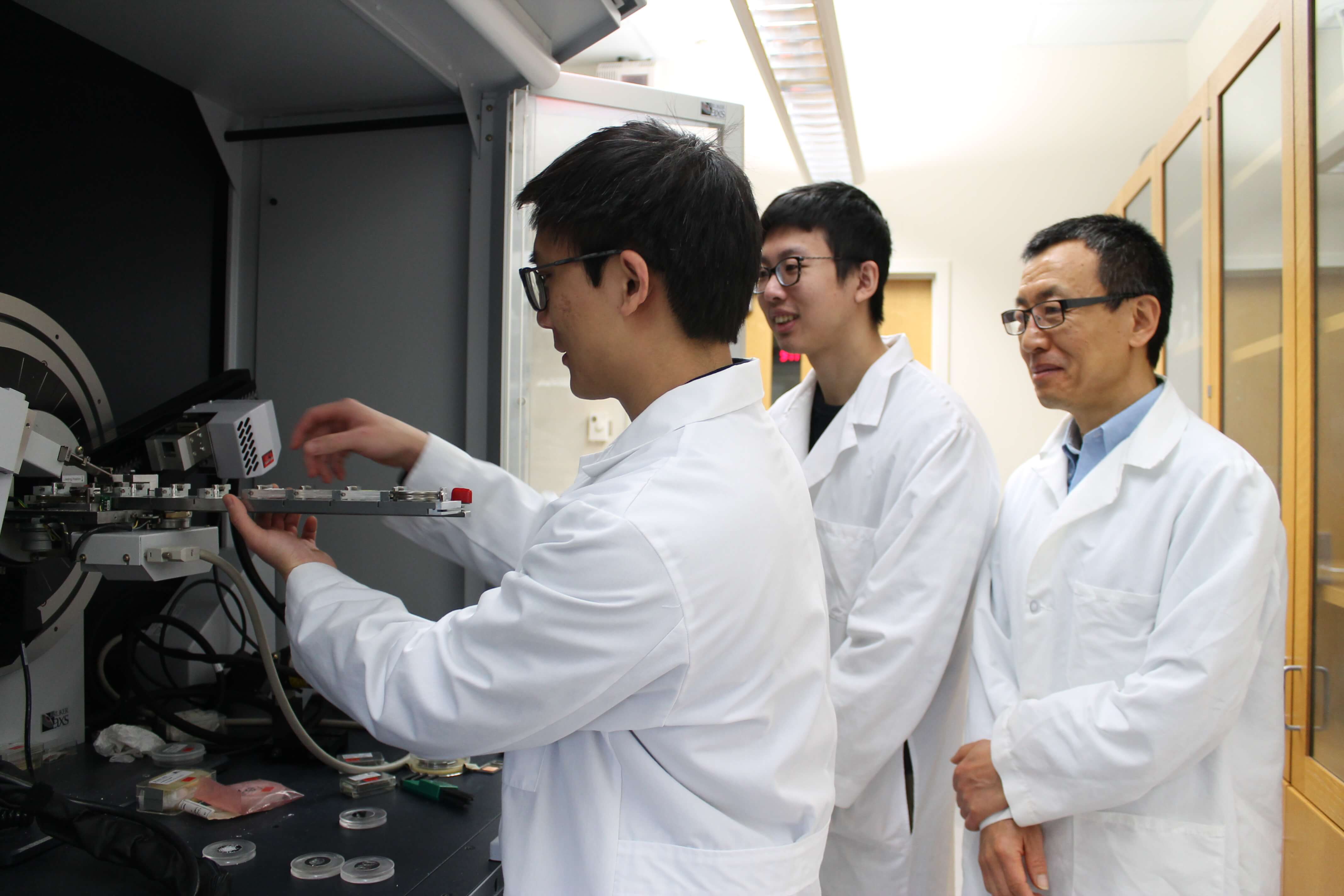
There’s an overall trend that newer drug candidates are less soluble than those developed in past decades, Yu says. That’s largely due to the methods used to screen drug leads, which prioritize potency over solubility.
“It’s a challenge to formulate these candidates,” Yu says. “Because of low solubility, many efficacious compounds fail to become products and benefit patients. Amorphous materials are becoming a general strategy for solving this problem.”
He is taking the approach a step further, using insights into the structure and motion of molecules within these amorphous solids to design better pharmaceuticals and more.
Balancing solubility and stability
The structure of solid materials can be characterized as crystalline or amorphous, depending on the internal arrangement of its molecules. Crystals are highly ordered arrays of identical molecules, whereas glasses have pockets of local order but lack long-range organization throughout the material.
For pharmaceuticals, there are advantages and disadvantages associated with each type of structure. Crystals are highly stable and resist breakdown—useful when a drug is sitting in a warehouse, but not once a pill has been ingested. Amorphous materials are less stable but more soluble, which can mean higher bioavailability but shorter shelf life.
These properties influence how drug manufacturers prepare their formulations. “The same drug can be either crystallized or prevented from crystallizing, depending on the processing conditions,” Yu explains.
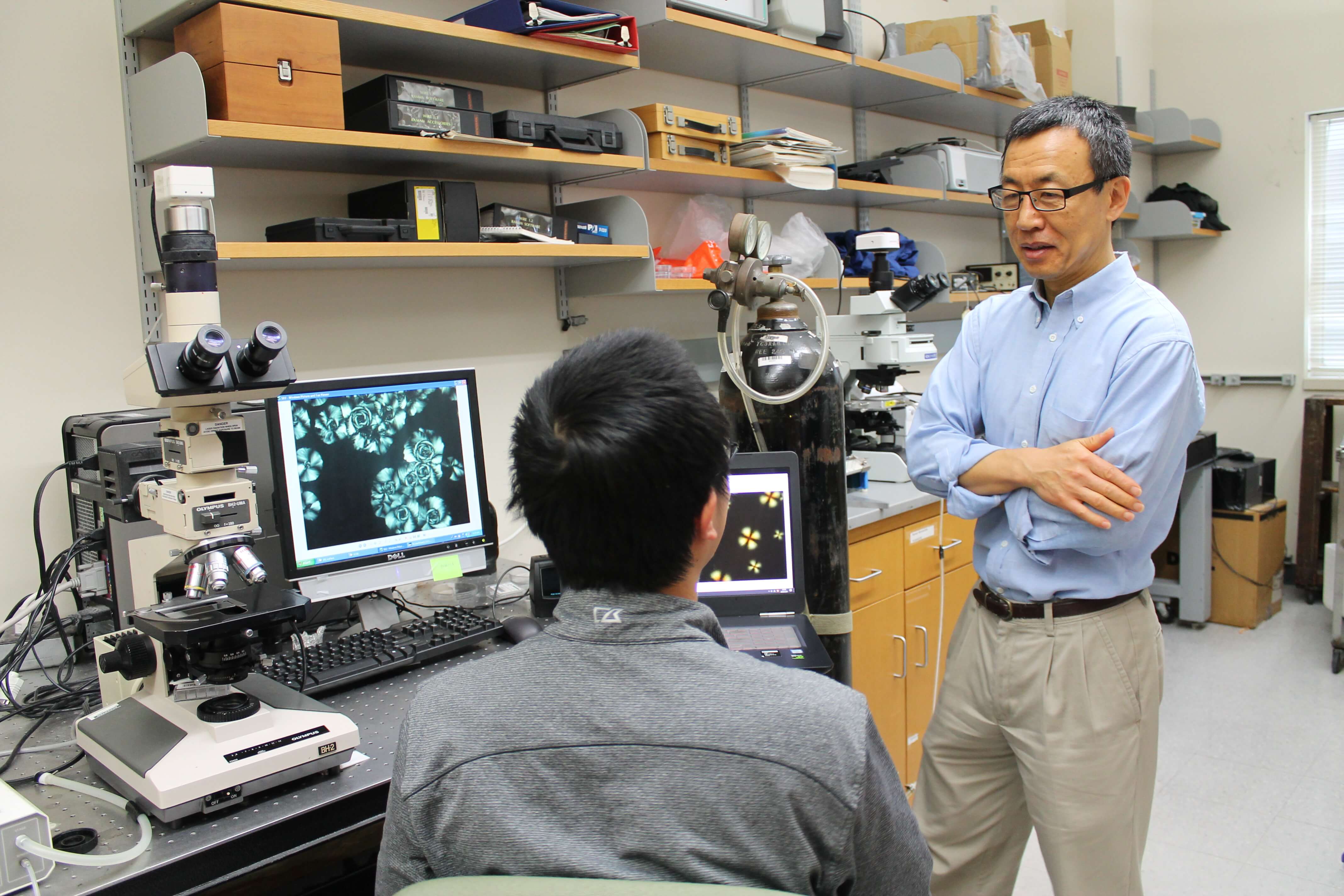
Amorphous pharmaceuticals offer another advantage over crystals: uniform mixing. Crystals naturally exclude impurities when they form. But when formulating a drug, Yu says, you often want to be able to incorporate multiple components in a single particle. For example, there’s huge interest in producing multi-drug combinations to simplify treatment regimens for HIV, cancer, and other complex diseases. Many formulations also incorporate polymers or other non-drug compounds into the material to improve stability, solubility, or other characteristics.
Mixing different molecules together is much easier in a liquid than a solid such as a crystal, Yu says, and from a chemical standpoint, glass is just a frozen state of liquid. “The magic happens in the liquid state. You can process the material as a liquid and then freeze it into a solid glass,” he says. The molecules remain suspended in the glass like a mosquito trapped in a chunk of amber.
“When you have crystals, you could have drug A and drug B crystals next to each other. But in the glassy material they are intimately mixed, dissolved in each other,” he says. “When the two crystalline particles dissolve, they dissolve at their own rate, determined by their solubility. But in a glass, the two are dissolved in each other and are released at the same time.”
Global health implications
For these reasons, amorphous formulation has become an important approach to improving the delivery of poorly soluble drugs. But the approach comes with challenges, Yu says. Not all materials will readily form a glass. And once formed, not all remain amorphous for long.
“One problem with amorphous materials is that they tend to crystallize,” he says.
That crystallization reduces the solubility of the drug, lowering its effective concentration. Drug manufacturers have contended with this problem by adding polymers and other materials to the mix to help stabilize the formulation and prevent crystallization. But these stabilizing materials—which can comprise 70 percent or more of the mix—limit how much active drug can be loaded into a tablet or capsule.
“Because of low solubility, many efficacious compounds fail to become products and benefit patients. Amorphous materials are becoming a general strategy for solving this problem.” —Lian Yu
With support from the Bill & Melinda Gates Foundation, Yu’s group is working to develop inexpensive and stable amorphous formulations that permit higher drug loading. Such formulations would have broad use in global health applications. Yu’s approach builds on a recent discovery about what causes the instability of an amorphous drug particle.
“It grows crystals on the outer surface because the molecules move very rapidly on the outside, but not inside,” Yu explains. “So the idea we had was to apply a polymer coating on these particles to immobilize the surface molecules. This greatly improved stability against crystallization.”
The nano-coating is so thin that it adds very little non-drug material to the overall formulation, while targeting the area of greatest instability. “The coated particles are essentially pure drug, making it a high-loading, stable amorphous formulation,” he says.
The approach, developed using acid-base chemistry, uses very simple steps that can easily be scaled up and incorporated into current drug manufacturing processes at low cost, he says. The Wisconsin Alumni Research Foundation has filed a patent based on Yu’s research to help move the technology toward commercialization.
Maintaining order
Amorphous materials have many uses beyond pharmaceuticals. With a grant from the National Science Foundation, Yu is conducting related work exploring ways to improve glasses made from liquid crystals, the technology platform used in many sensors and screens, such as flat-screen displays and cell phones.
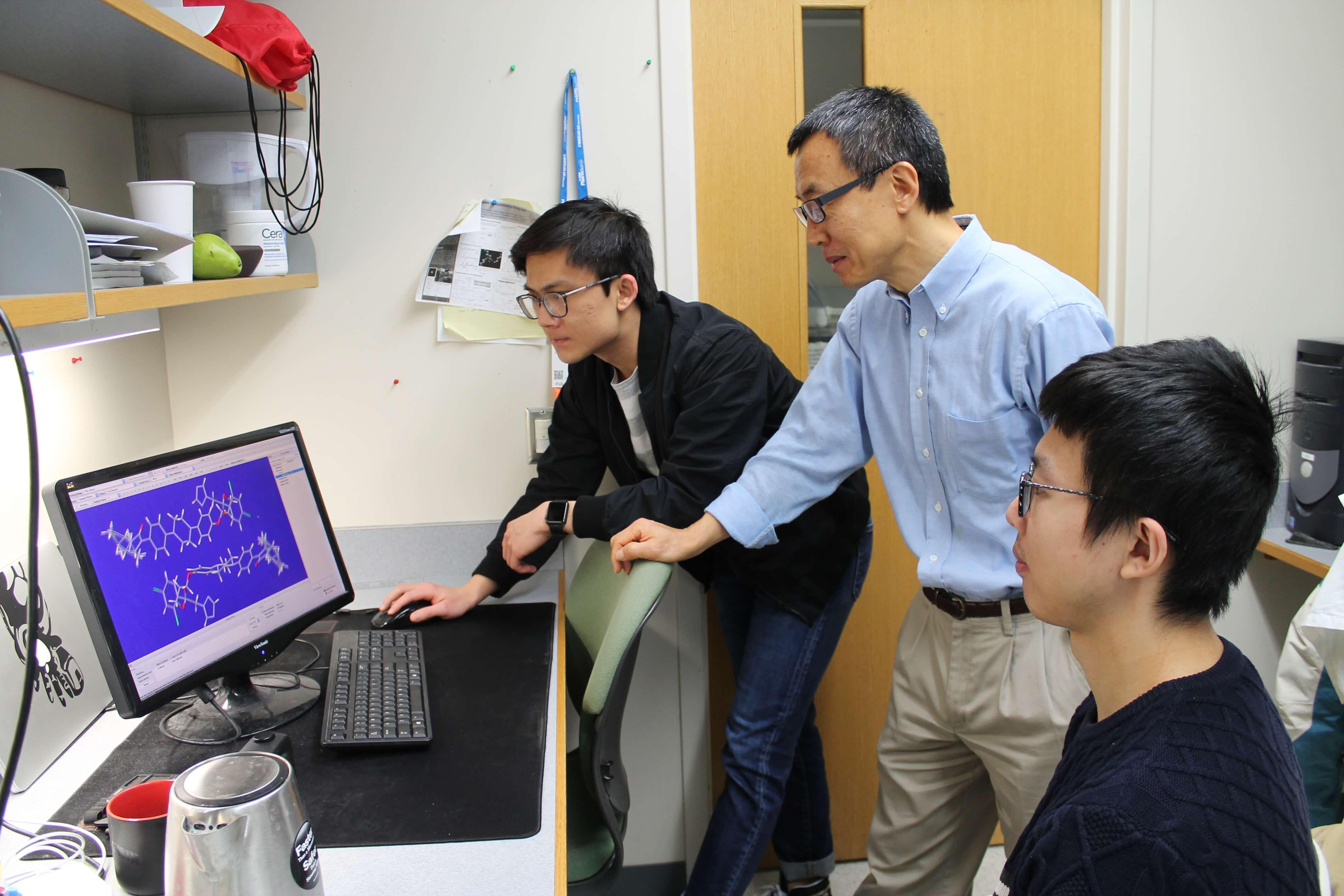
As the name suggests, liquid crystals are liquid, just like a glass of water, he says, but one essential feature is that the molecules in the liquid crystals are aligned. That alignment controls properties such as light transmission. “The idea of this proposal is to align liquid crystal materials in the ways you want and to the extent you want, then freeze that alignment into a glass to achieve better performance for these devices,” Yu says.
Similar to the challenges associated with formulating drugs, the project requires balancing the order and disorder of the liquid crystal material. He aims to tweak the structure of the material to make a sort of hybrid that falls between crystals and glasses, one in which researchers can control the molecular alignment.
Individual molecules can rotate freely within a liquid crystal but become frozen into place as it forms a glass. The Yu Lab discovered that rod-shaped molecules in liquid crystals rotate at different speeds in different directions—fast spinning on the short axis and slow spinning end-over-end. They showed that the freedom to rotate end-over-end controls how much order a liquid crystal can develop.
The Wisconsin Alumni Research Foundation has filed a patent based on Yu’s research to help move the technology toward commercialization.
“Because they have different rates of rotation, you can freeze the slow rotation and therefore freeze the development of the liquid crystal order,” he says. That allows the researchers to “tune” the properties of the material by using different processing conditions. They are experimenting with different rates of cooling and solvent evaporation and applying an external electric field, which can help align molecules with an electrostatic potential.
Yu hopes that the knowledge his research group produces can be applied in manufacturing to tailor the properties of liquid crystal glasses for many applications. “We’re optimistic that these improved materials will be useful for organic light emitting diodes and for amorphous pharmaceuticals.”






